David Adjaye and Ron Arad reveal defeated National Holocaust Monument design
Here's the design that didn't win: architect David Adjaye and designer Ron Arad have revealed their shortlisted entry for Canada's National Holocaust Monument competition, which was beaten by a star-shaped design from Daniel Libeskind (+ movie).
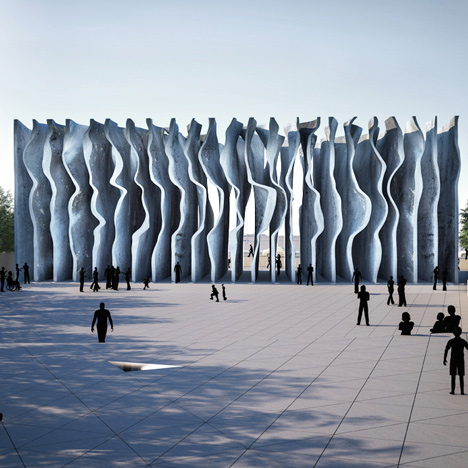
David Adjaye and Ron Arad teamed up with art historian and curator Irene Szylinger and public arts consultant Tatar Art Projects on their proposal for the memorial, planned for a site in the Canadian capital, Ottawa.
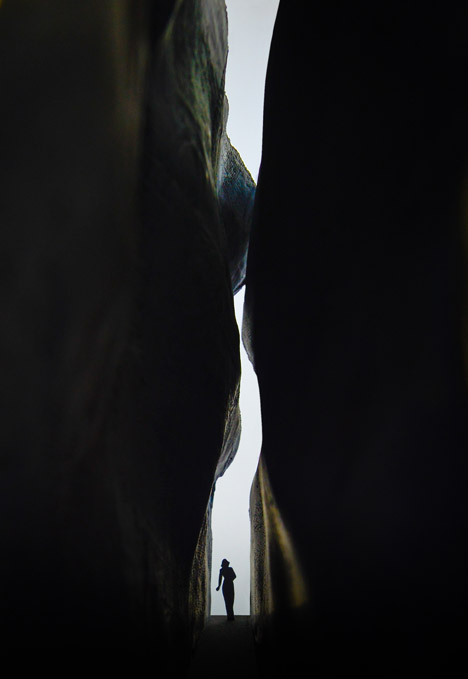
The design comprises a series of wrinkled concrete walls that frame 22 narrow passageways – one for each country where Jewish communities suffered genocide during the Holocaust.
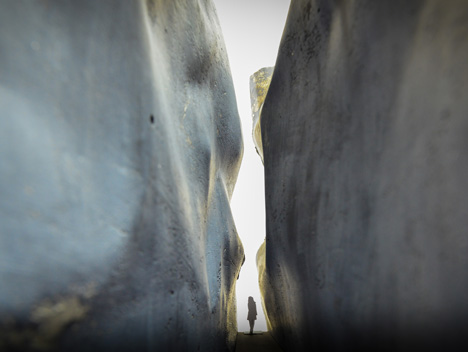
Measuring 14 metres high and 20 metres wide, the huge concrete walls – known as "foils" – would have been spaced just over a metre apart, meaning only one visitor could fit through at a time.
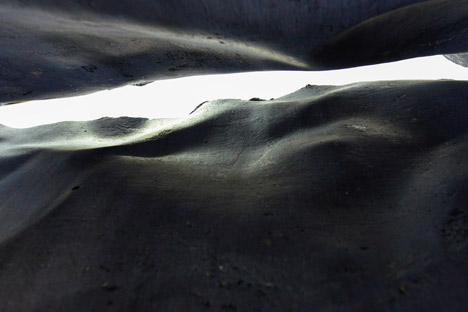
"Our proposal does pose a central, unavoidable theme – the voyage the visitor makes through these foils is one each must take alone," said the team in a statement.
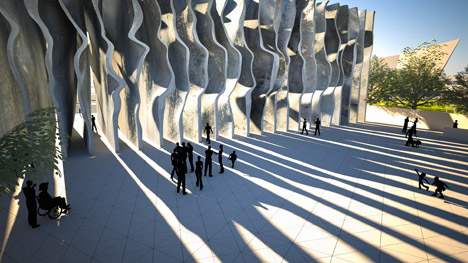
The folds and curves of each wall would be different, intended to be reminiscent of scars. Thicknesses would vary between 15 and 50 centimetres, and each surface would display a variety of textures.
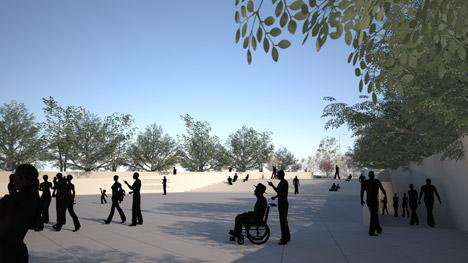
The designers describe these as "at times almost perfectly smooth to the touch, and at others left punctuated by the variation of stone aggregate within them".
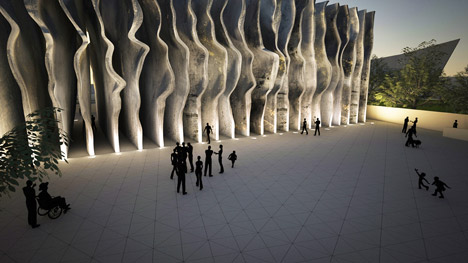
The proposal was one of six shortlisted entries to the design competition. A team featuring architect Daniel Libeskind and artist Edward Burtynsky was named winner last week, also beating Canadian architect Gilles Saucier and Polish artist Krzysztof Wodiczko.
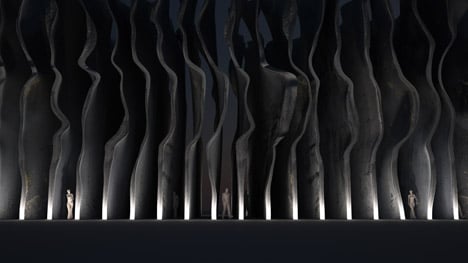
Here's a project description from the designers:
National Holocaust Monument Ottawa
"The enormous historical literary and dramatic material produced over nearly half a century about the Final Solution, has created a kind of resistance. But it would be perilous if we allowed this "compassion fatigue" to make us forget the singularity of this horror" – Gitta Sereny, 1996
When faced with the daunting task of formulating a design brief for a memorial to honour the victims and survivors of that most recognised of collective human travesties, one cannot escape a fundamental conundrum. How can a monument in the public realm evoke a shared set of experiences relating to the Holocaust and its survivors – experiences which defy abstraction or simplification, by virtue of their being so specific, so traumatic and personal?
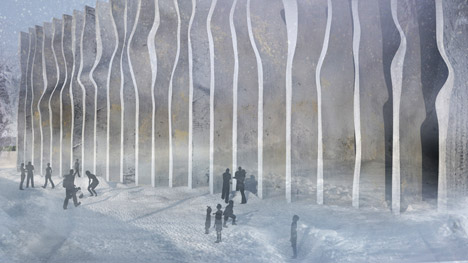
Furthermore, the Holocaust Memorial is a Canadian monument honouring the victims and survivors of events which took place a great distance away from Canadian soil, and which are now reaching the edge of living memory.
There is thus an implied responsibility to both strongly anchor the memorial in Canada, home to the fourth largest Jewish population in the world, and to make it inclusive, relevant and strongly resonant with any who visit it, and especially a younger and broader audience. We have been given the opportunity, and have the freedom to build the memorial which stands as evidence for future generations, and the very introduction of such a monument to the capital of this model democracy, defies forgetfulness, or worse, the denial of the Holocaust.
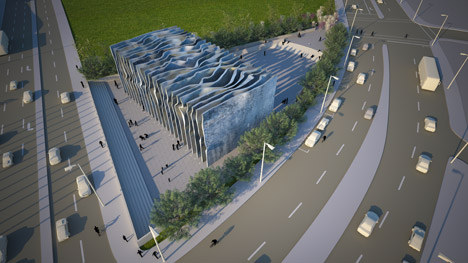
The monument centres on an array of thin walls or foils, each up to 14m in height and 20m in length, spaced 120 centimetres apart from each other – just enough for a visitor to pass through in single passage. While we resist prescribing an 'experience' or enforcing didactic content onto the memorial, our proposal does pose a central, unavoidable theme – the voyage the visitor makes through these foils is one each must take alone. It is a shared experience only from a distance, and in retrospect, once others have journeyed through it as well.
The passage in-between the foils, recalls a key biblical reference – the Covenant of the Pieces: a pivotal event which symbolises God's bond with the Patriarch Abraham and his descendants, and the promise of deliverance following long-endured hardships. The Covenant was sealed by a column of smoke and fire which travelled in-between an array of sacrificed animal pieces, searing them in the process. This also resonates with the Latin meaning of the word Holocaust (Holocaustum): 'burnt offering' or 'a sacrifice completely consumed by fire'.
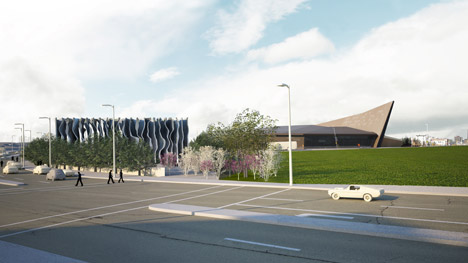
The higher reaches of these foils are individually articulated through dramatic folds and impressions to create an undulating, and at times frayed appearance. These are redolent of the imprints, or scars which events may leave in their wake – the tracery of damage which is both testament to history, and a mark carried into the future.
There are 23 concrete foils in total, facilitating 22 pathways – one for each country in which Jewish communities were decimated during the Holocaust. Their combined impact is an interplay between robustness and frailty, cohesiveness and fragmentation; like pages in a book, or individual members in a tightknit community.
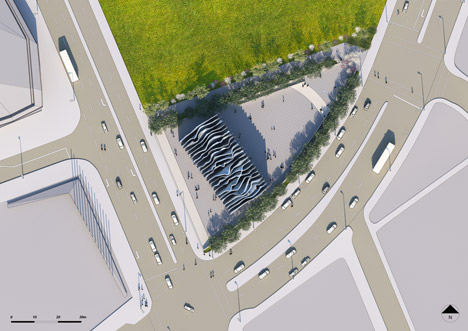
The foils are to be built as slim (it is envisaged that they would range between 50cm at their widest, to approximately 15cm at their thinnest edge), steel-reinforced concrete elements, formed in such a way as to celebrate a wide spectrum of textures; at times almost perfectly smooth to the touch, and at others left punctuated by the variation of stone aggregate within them. The narrow, linear passage between these cannot but pull the eyes upwards, to reveal the canyon-like undulations which frame the sky above. These vary from passage to passage, and may provoke and evoke a variety of emotions and connotations, such as the naturally occurring ravines in the Jordanian desert, or the charged tunnels beneath Jerusalem's ancient Western Wall.
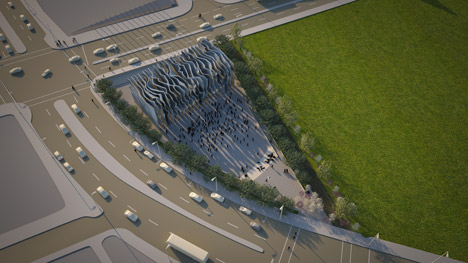
As darkness falls, floor-mounted uplighters near both edges of each foil serve to accentuate the thin sculptural outer faces of each one. From afar, the cohesive volume which envelopes the monument is delicately broken down into its almost frail-looking component parts. From within, and still accessible, the monument offers a well-lit environment from which to enter each pathway. These lead into the darker centre of the path, and ultimately into the light at the end of each passage.
We believe and hope that the immediacy of the physical, non-verbal experience offered by the monument, beyond its categorisation as architectural or sculptural, will serve to inspire future generations to connect the events of the Holocaust to other human tragedies of other times and places, and take a stance on wider issues of human rights and freedoms.